Road biking is an excellent outdoor activity that provides a great physical workout, mental relaxation, and great adventures on the open roads. However, choosing the right bike can be a daunting task, especially with many models and brands on the market today.
Fortunately, 700c road bikes are becoming increasingly popular among cyclists, and for various good reasons. In this blog post, we will discuss why investing in 700c road bikes is worth it and how it can elevate your biking experience.
1) Speed and Efficiency:
700c road bikes are known for their speed and efficiency, making them a perfect bike for long-distance cycling and triathlons. With a larger wheel size of 700c and skinnier tires, they can easily maintain momentum and speed. This means that you can ride faster, further, and with less pedal effort, making them an ideal bike for commuters and long-distance cyclists looking to lower cycling times.
2) Enhanced Comfort:
700c road bikes are designed to provide enhanced comfort and prevent fatigue during long rides. They feature a geometry that encourages an upright posture while cycling, relieving the pressure on your lower back and wrists. Additionally, they feature thinner seat cushions that distribute weight evenly, keeping you comfortable for longer periods.
3) Durability:
700c road bikes are constructed using high-quality materials, making them more durable and long-lasting. For instance, carbon frames are lightweight yet strong, with a higher strength to weight ratio than steel frames. They can easily withstand rough outdoor terrains and heavy weights, making them an excellent investment.
4) Versatility:
700c road bikes are incredibly versatile, making them suitable for different types of cycling. Whether you are cycling for fitness, leisure, or commuting, 700c road bikes can serve you well. Also, you can easily mount racks for carrying luggage, making them a perfect cycle for touring.
5) Style:
700c road bikes' sleek and elegant design adds to their allure, making them a popular choice for style-conscious cyclists. Moreover, 700c road bikes are highly customizable, and you can easily swap components or upgrade them for a more personalized feel, making your ride more enjoyable.
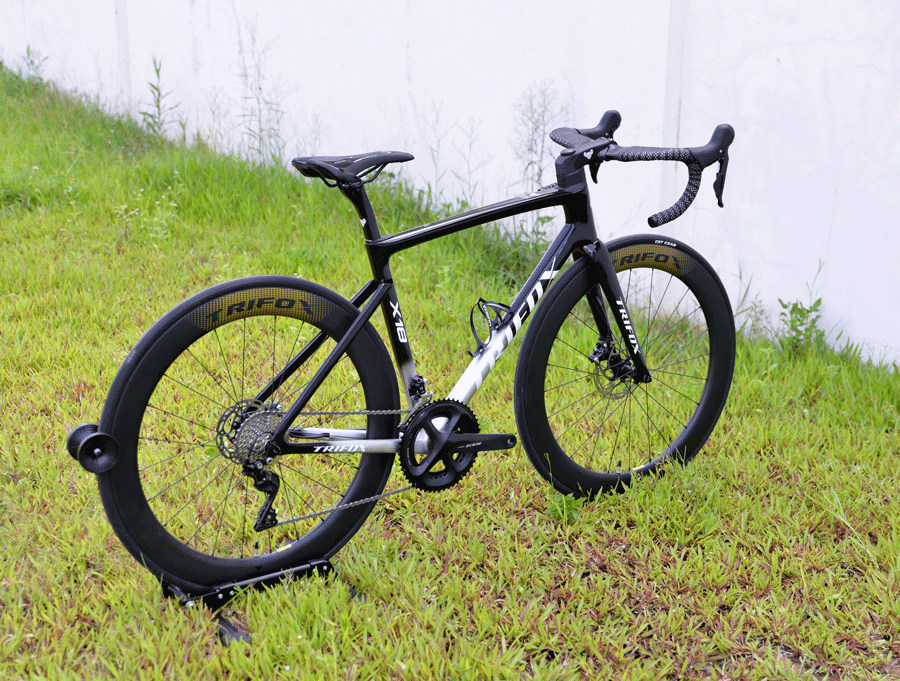
In conclusion, investing in 700c road bikes is worth it, providing a fantastic cycling experience filled with speed, comfort, durability, versatility, and style. While it may require a significant initial investment, the benefits that come with owning one are unmatched. Whether you are an experienced road cyclist, triathlete, or just cycling for leisure, a 700c road bike is a solid investment that will elevate your biking experience.
If you're looking for a reputable brand, look no further than the Trifox Carbon 700c road bike.
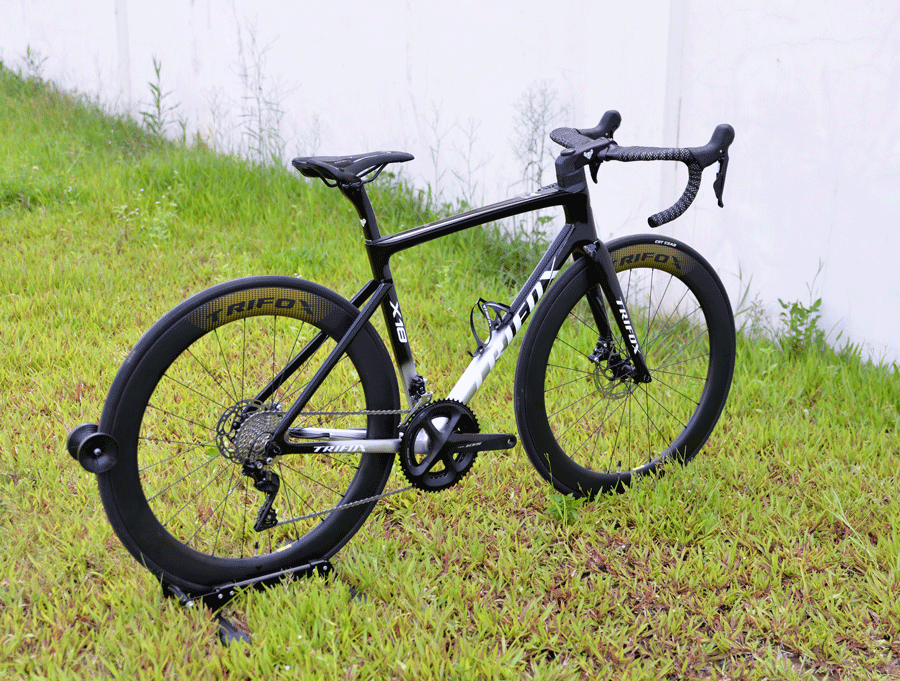
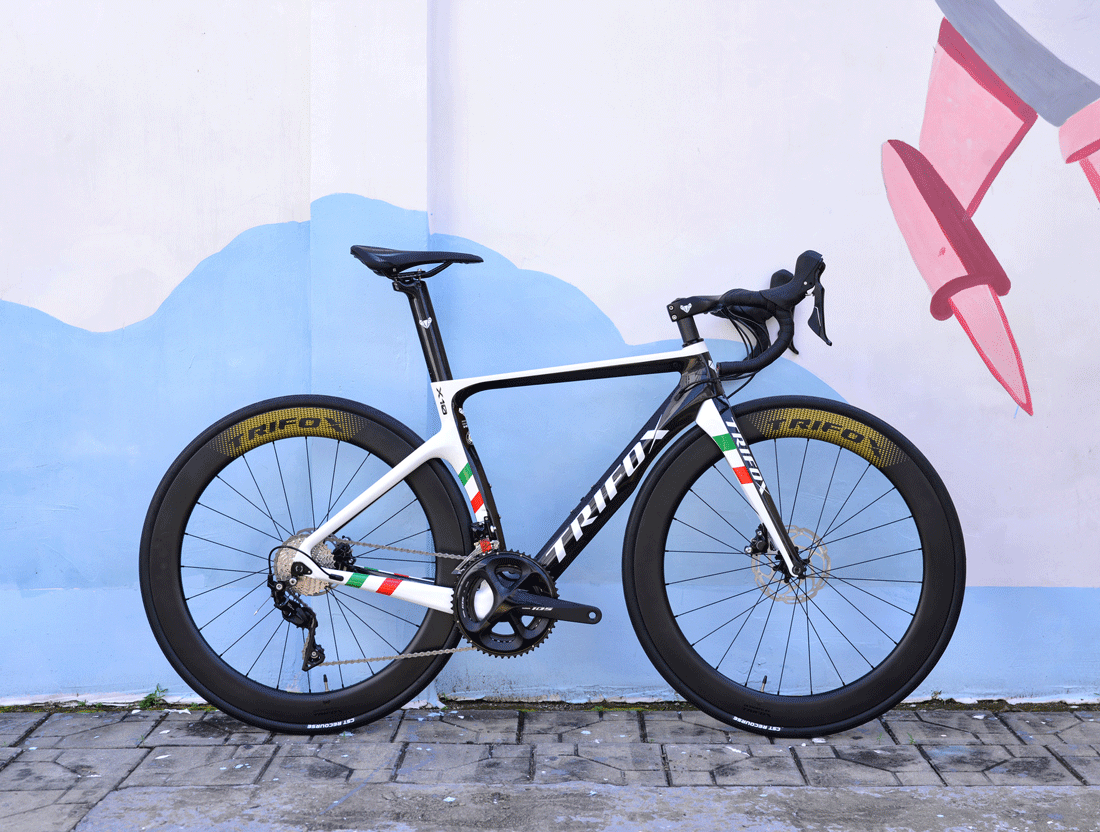
As we all know, carbon fiber is a popular material used in crafting bike frames as it is durable, lightweight, and offers excellent performance. However, these features come at a cost, and most carbon fiber frames are expensive, which can be discouraging, especially for those on a budget. Fortunately, you can still enjoy the benefits of carbon fiber frames without breaking the bank.
In this blog post, we'll highlight the best budget carbon fiber road bike frames available in the market, specifically Trifoxbike's five road framesets.
1. Carbon Aerodynamic Bicycle Frame X8QR and X8TA
For riders after a high-performance and stylish road bike frame, the Carbon Aerodynamic Bicycle Frame X8TA and X8QR from Trifoxbike is an excellent choice. These frames are crafted from lightweight and durable T800 carbon fiber, making them sturdy and aerodynamic. They come with V brake frames and are compatible with component sizes, ensuring optimal performance regardless of your preferred drivetrain setup.
2. Carbon Fiber Frame Road Bicycle X10
The X10 carbon fiber bicycle frame is Trifoxbike's new addition and highly compatible with both DI2 and mechanical systems. This compatibility ensures you experience optimal performance regardless of your preferred drivetrain setup. The X10 also comes with a seat post, front derailleur hook, hanger, and a headset, making it convenient and effortless to set up your dream bike.
3. Carbon Lightweight Bicycle Frameset X12
If you're after an aero road frameset that provides comfort and personalized fit, Trifoxbike's Carbon Lightweight Bicycle Frameset X12 is a great option. This frameset is available in various sizes to accommodate different rider heights and inseams, ensuring a perfect fit for maximum performance.
4. Super Light Carbon Cycle Frame X16
For those looking for the lightest road bike frames, the X16TA and X16QR from Trifoxbike come highly recommended. The X16TA has a Front: 100mm*12mm and Rear: 142mm*12mm compatibility with component sizes, while the X16QR has a Front: φ9x100 mm and Rear: φ10x130 mm. Both frames are crafted from super light carbon fiber and come with a seat post and headset, making them perfect for those who require optimal performance at a reduced weight.
5. Carbon Road Bike Frame X18
Lastly, Trifoxbike's Carbon Road Bike Frame X18 is perfect for cycling enthusiasts and professional riders. This frameset allows compatibility with component sizes, including the Full Internal Cable Routing Bike Frameset X18, which accommodates up to 700c wheels, with tire widths ranging from 28mm. The braking system is a Disc Brake (clipper holder: Flat Mount), Thru Axle Dropout, ensuring maximum safety while on the road.
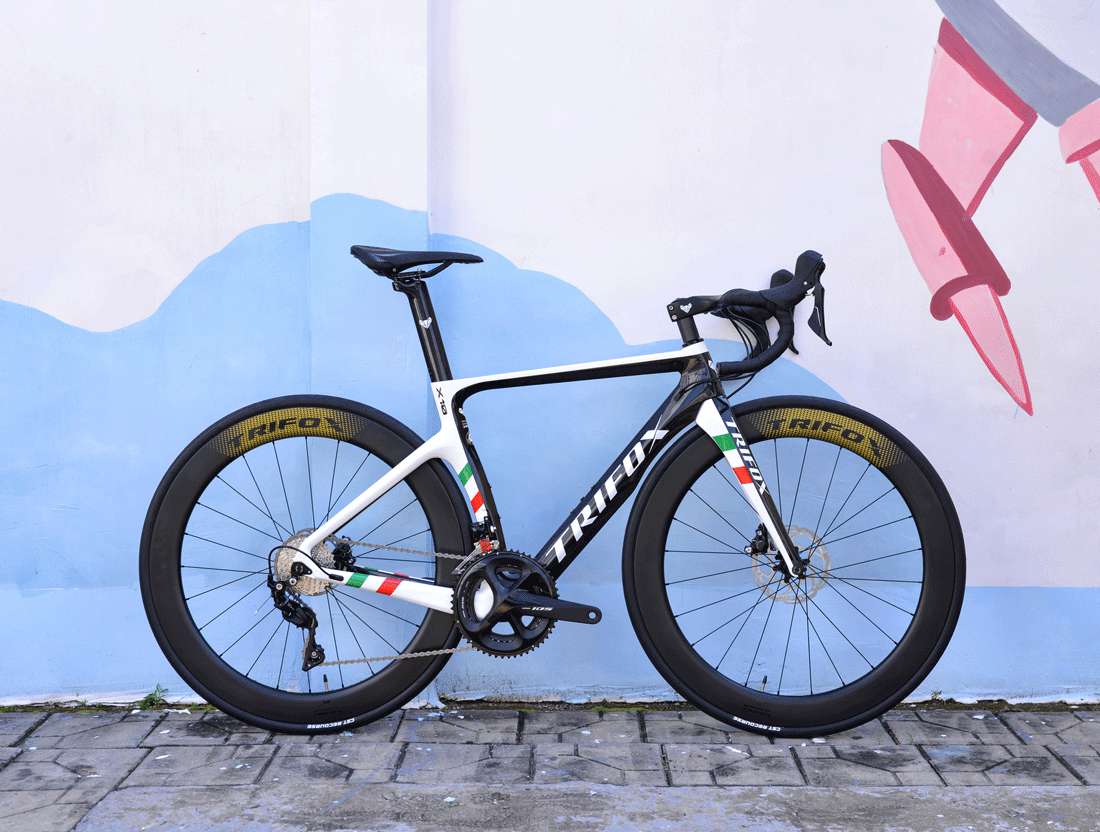
Conclusion: Finding a budget-friendly carbon fiber road bike frame can be challenging. Still, Trifoxbike's five road framesets are a testament that you don't have to break the bank to enjoy the benefits of carbon fiber frames. They are all crafted from high-performance and durable materials, ensuring optimal performance for every rider. Take your cycling experience to the next level with Trifoxbike's affordable excellence.
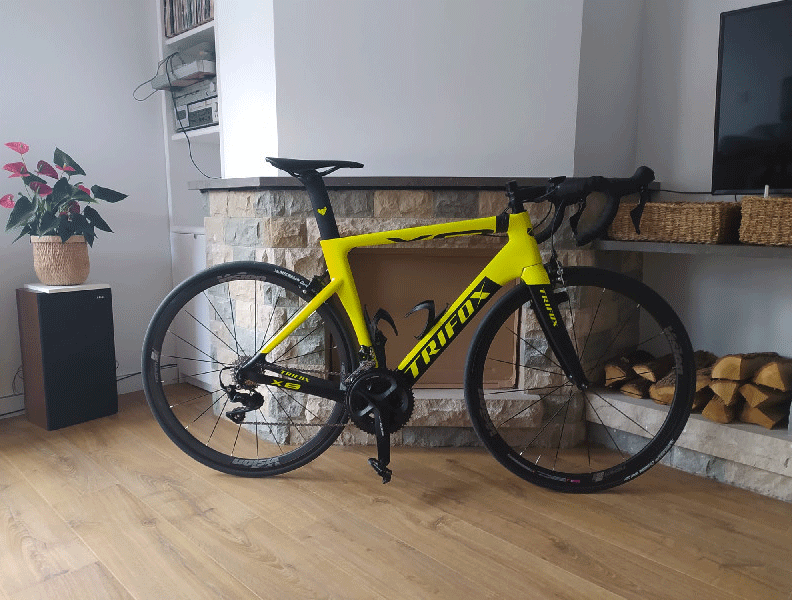
How Choosing the Right Road Bike Frame Size by Height?When it comes to choosing the right bike, there are several factors to consider, including the frame material, components, and, most importantly, the size. The size of your bike frame can significantly affect your comfort and performance while riding. One size does not fit all, and it is crucial to choose the right frame size, especially for road bikes.
This blog post will guide you through how to select the best road bike frame size based on your height.
1. Why is your height essential for choosing the right bike frame size?
The height of the rider determines the size of the frame that will be suitable for them. A bike that is too small or big for you can result in discomfort, making it difficult to ride efficiently and safely. A bike with the right size will allow you to pedal comfortably, take corners without sacrificing balance, and transfer power efficiently.
2. How to measure your height accurately?
To determine your height accurately, you can place your back against a wall with your feet together, and your socks off. You can then use a tape measure to measure from the top of your head down to the floor. Ensure that you stand straight, as even a slouch can alter the measurements.
3. Choosing the right frame size based on your height:
Based on your height, you should choose a bike frame size that corresponds to your height range. For example, if you are within the height range of 5'7" - 5'9", you should choose a frame size of 54 - 56 cm. Most bike brands have size charts that provide a different frame size range based on height. However, it is essential to note that there are slight variations in frame measurements based on bike brands.
4. Factors that affect bike frame sizing:
Apart from your height, other factors can affect your bike frame sizing, including your inseam length, arm length, and flexibility. If you have a longer inseam or arms, you may need a more extended reach, which can affect the size of the bike frame you choose. Additionally, more flexible riders may choose a smaller frame size to accommodate their reach without compromising their performance.
5. The importance of trying out different frame sizes:
While using a size chart can help you choose the right frame size based on your height, it is essential to try out different frame sizes to determine the best fit for you. Most bike shops allow you to test ride their bikes, so take advantage of that to find the frame size that feels comfortable for you. Also, remember that the fit is not just about the frame size, but also the handlebar and seat height adjustment.

Conclusion:
Choosing the right road bike frame size based on your height is critical to ensuring that you have an enjoyable and comfortable ride. When selecting the bike frame size, consider factors like your inseam length, arm length, flexibility, and most importantly, try out different frame sizes to determine your best fit. A well-fitting frame size enables you to ride efficiently, transfer power efficiently, and take corners with confidence. With the above guide, you can easily and confidently choose the right road bike frame size for your height.
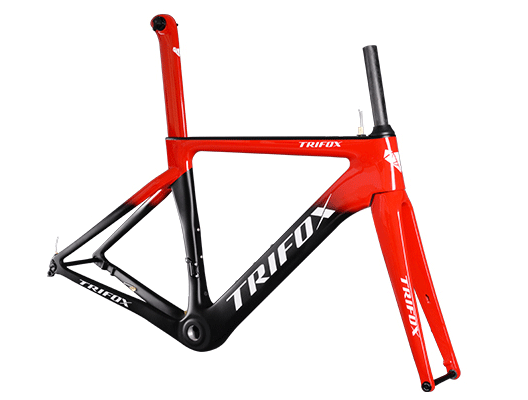
Cycling is one of the most exhilarating and physically demanding sports there is, and with the right equipment, it can be an even more enjoyable experience. If you're looking to take your cycling to the next level, investing in a high-quality road bike frame set can do wonders for your performance. One frame set that stands out is the Carbon Aero Disc Cycling Frameset X8TA, which is designed for optimum aerodynamics, comfort, and performance.
In this blog post, we explore why this particular frameset is worth considering for cyclists looking to take their rides to the next level.
1. Aerodynamics
The Carbon Aero Disc Cycling Frameset X8TA features aerodynamically designed T800 carbon fiber which provides excellent comfort and reduces wind resistance. With its streamlined profile, this bike can cut through the wind with ease, making it faster and easier to ride. Additionally, it comes with internal cable routing to enhance aerodynamics, further reducing the drag during cycling.
2. Versatility
This frame set is perfect for various cycling activities, from extended road trips to club rides and even racing. It provides a swift and smooth riding experience, thanks to its lightweight construction and comfortable design. You'll enjoy an equally enjoyable experience across different cycling activities, making it a great option for cyclists looking for a versatile bike.
3. Compatibility
Another noteworthy feature of the Carbon Aero Disc Cycling Frameset X8TA is its compatibility with both DI2 and mechanical groupsets. Whether you have a high-tech electronic drivetrain or a classic mechanical setup, this component ensures compatibility, providing smooth and efficient performance for your bike.
4. Tire Clearance
The frame set comes equipped with clearance for tires up to 25C. This feature ensures that the bike can effectively absorb road bumps, providing a smoother and more comfortable riding experience. You can tackle varying terrains without worrying about jolts on your hands, making this frame set even more comfortable.
5. Precision Handling
The way a bike handles can significantly impact your overall cycling performance and safety. The Carbon Aero Disc Cycling Frameset X8TA features a threaded axle that attaches the wheel to the frame or fork, providing precise alignment and improved handling. This feature enhances overall performance and safety of the bike, providing an enjoyable and confident ride on various terrains and conditions.
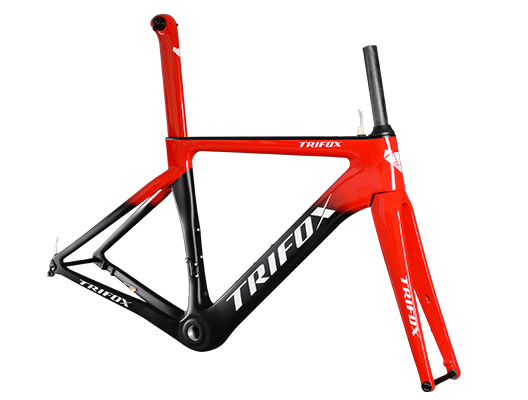
Conclusion:
Investing in the perfect bike frame set can make a significant difference in your cycling experience. The Carbon Aero Disc Cycling Frameset X8TA is an excellent choice, offering aerodynamics, compatibility, versatility, tire clearance, and precision handling. By choosing this frame set, you can unleash your cycling potential, taking your rides to the next level. So, why not give it a try?
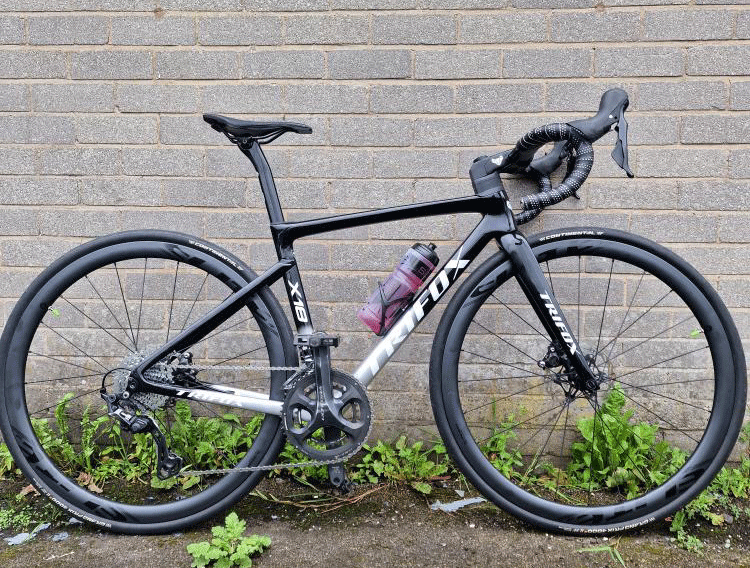
Are you looking for a competitive edge in your road biking? Look no further than a carbon road bike frame. Carbon fiber has become the material of choice for many high-performance bikes. But what exactly makes it so special?
1. Lightweight:
Carbon fiber is a material that provides unparalleled weight savings. This is one of the biggest reasons why carbon road bike frames are so popular among riders aiming for top performance. Compared to other materials like aluminum or steel, carbon fiber is far lighter, which means it requires less energy to move the bike forward. A lighter bike also means you can climb hills and accelerate quicker with less effort.
2. Stiffness:
Another advantage of a carbon road bike frame is the stiffness it provides. Stiffness refers to the bike's ability to resist flexing, especially during hard pedaling or sprinting. Stiffness is directly linked to responsiveness, which means a stiffer frame can make for more precise handling. Carbon fiber offers more stiffness than other materials, which is why it's often favored by professional racers.
3. Durability:
Because carbon fiber is a synthetic material, it can be molded into customizable shapes to fit a rider’s needs. Durable and resilient, it’s also resistant to rust and corrosion. In a sport where crashes occur, carbon fiber is known for becoming more durable than aluminum and steel which tend to dent or deform in the same scenario. As long as you take care of it, a carbon bike frame will last as long as a traditional aluminum or steel bike frame.
4. Aesthetics:
Looks aren't everything, but it's hard to deny that carbon fiber looks cool. Without a doubt, it attracts attention. The woven pattern of carbon fiber can create a sleek, distinctive look that makes you stand out on the road. Be it a glossy, unidirectional finish or a matte black polished surface, carbon fiber frames tend to look much fancier.
5. Aerodynamics:
Performance-focused designs on carbon fiber road bikes offer aero-dynamic benefits to complement aerodynamic riding positions. Carbon fiber allows designers to shape the frame to create smooth airflows in conjunction with aerodynamic riding positions. It has direct effects on the rider's position, enabling them to accelerate quickly and maintain higher speeds more effectively.
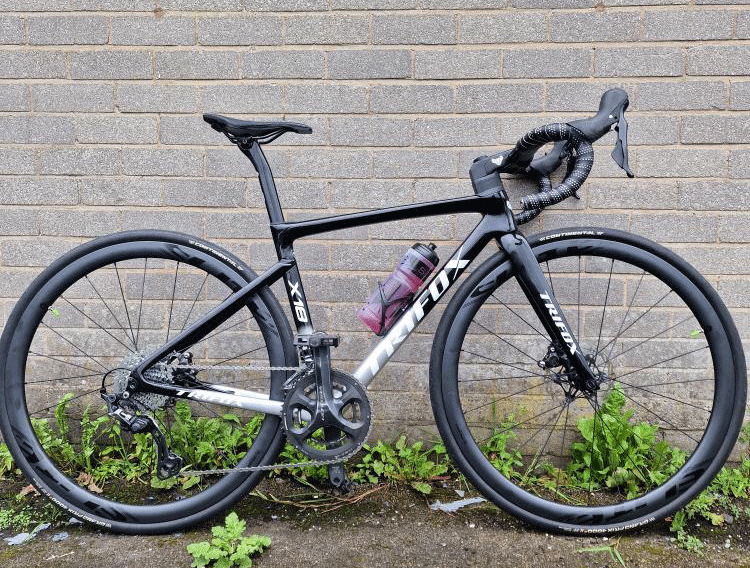
Conclusion:
Carbon road bike frames offer unbeatable benefits over their traditional aluminum or steel counterparts. In addition to the great performance advantages, carbon frames also look impressive and offer customization options. The only drawback is the price. Carbon road bike frames don't come cheap. However, investing in a carbon fiber bike frame may just be that one thing that could uplift your performance for maximum rewards. Try it out to see the difference yourself.
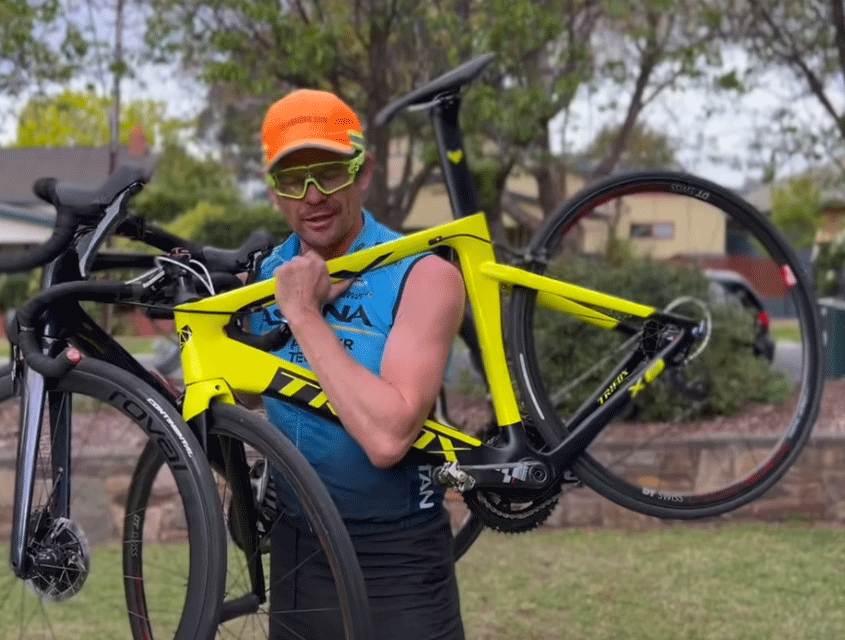
Investing in a road bike is a great way to stay active and explore the great outdoors. But with so many bike frame sizes available, figuring out which one is best for you can be a daunting task.
1. Measure Your Inseam
The first step in choosing the right frame size for your road bike is to measure your inseam. This is the distance between the floor and your pelvic bone, measured with your feet shoulder-width apart. Once you've measured your inseam, you can use a sizing chart to determine the appropriate frame size. The AERO Carbon Road Bike Frameset X8TA comes in sizes ranging from 49cm to 58cm, with a chart that recommends frame sizes based on inseam measurements.
2. Consider Your Riding Style
Your preferred riding style can also influence the ideal frame size for your road bike. For instance, if you plan on racing, you might prefer a smaller frame size for a more aggressive, aerodynamic riding position. On the other hand, if you plan on using your bike primarily for commuting or touring, you might prefer a slightly larger frame for a more comfortable, upright position. The AERO Carbon Road Bike Frameset X8TA is designed with aerodynamics in mind, with a seat tube angle of 74.5 degrees and a head tube angle of 72 degrees, making it a great choice for racing or aggressive riders.
3. Pay Attention to Standover Height
Another important factor to consider when choosing a road bike frame size is standover height. This is the distance between the top tube of the bike frame and the ground. Ideally, when you straddle your bike, there should be at least one inch of clearance between your body and the top tube. The AERO Carbon Road Bike Frameset X8TA has a standover height of 77.8cm to 81.4cm, depending on the size of the frame.
4. Seek Professional Help
While sizing charts and online guides can be helpful in selecting a road bike frame size, it's always a good idea to seek professional help when making your final decision. Visit your local bike shop and get a professional fitting to ensure that you’re making an informed decision. They can take into account your inseam, riding style, and other factors to recommend the perfect frame size for you.
5. Test Ride and Adjust
Lastly, don't be afraid to test ride and make adjustments to your new bike. You might find that even with the perfect frame size, you prefer a slightly different handlebar height or saddle position. Take your time to get comfortable on your new bike, and make any necessary adjustments to ensure that you have the best riding experience possible.

Conclusion:
Choosing the right frame size for your road bike is essential to ensure a comfortable and enjoyable ride. By measuring your inseam, considering your riding style, paying attention to standover height, seeking professional help, and test riding and making adjustments, you can find the perfect fit for you. With the 700C AERO Carbon Road Bike Frameset X8TA, you have a high-quality option with varying sizes to fit most riders. Take the time and effort to find the right frame size, and you'll be sure to enjoy many miles of cycling fun.
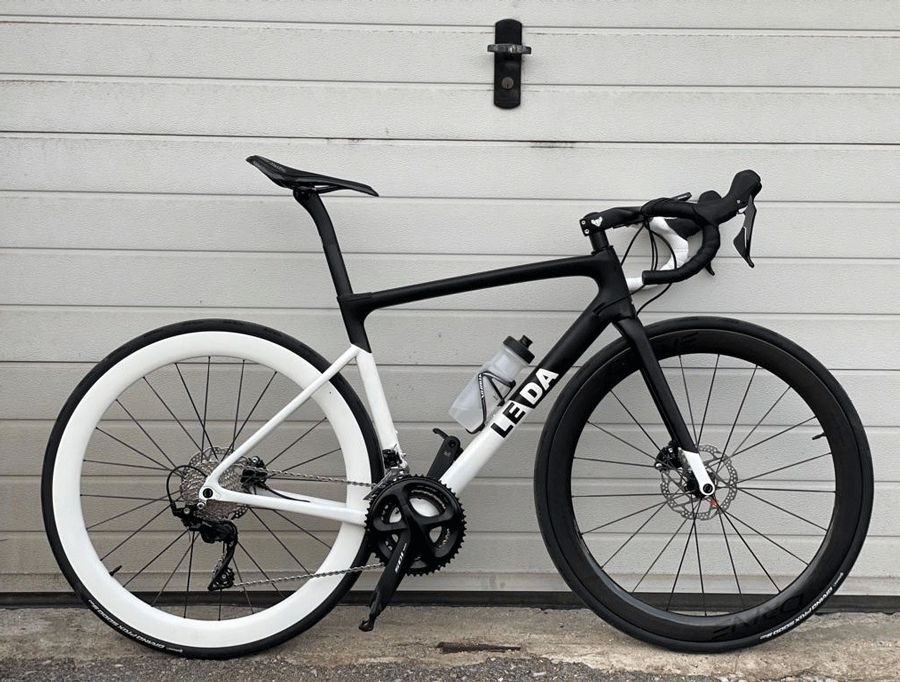
Are you in search of quality mountain bike wheels that provide excellent grip, traction, and speed? Look no further than the 27.5 mountain bike wheels. These wheels offer impressive performance, unbeatable stability, and power to tackle even the toughest terrains.
1. Smoother Rolling
There's no denying that 27.5-inch wheels are significantly better in terms of smoothness than 26-inch bikes. Moreover, 27.5 wheels are sturdier than the larger 29-inch options. An added advantage is that these wheels can run lower tire pressures if you prefer to ride with more cushion. Therefore, if you're searching for a stable and comfortable ride that can absorb shocks and improve your experience, 27.5-inch tires make the perfect choice.
2. Improved Control
Mountain biking is all about control, and that's precisely what a 27.5-inch tire provides, better grip and control. In comparison to 29ers, 27.5 wheels are easier to navigate and control through tight turns and narrow trails, providing you with superior control, giving you peace of mind as you tackle rugged terrain.
3. Enhance Speed and Acceleration
When it comes to speed and acceleration, 27.5 bikes hit the perfect sweet spot. The wheels' weight is neither too heavy compared to 29ers nor too light compared to 26-inch bikes, making the ride smooth and efficient. As a result, you can achieve higher speeds while navigating more technical sections effortlessly and reach a top-speed that was not possible on a 26-inch bike.
4. A Perfect Blend of Efficiency and Comfort
Opting for 27.5 wheels gives you the perfect balance of comfort and efficiency while riding. 27.5-inch wheels require less effort to push compared to their 26-inch counterparts, while providing the added benefit of increased stability on the trails. Not to forget that the reduction in rolling resistance offered by the 27.5 tires translates to increased efficiency over longer rides.
5. Suitability for All Levels of Riders
The 27.5 wheel format is ideal for every rider out there, ranging from those just starting to intermediate and advanced level riders. The smaller wheel diameter of 27.5 makes them more responsive and easier to maneuver, allowing newer riders to easily control the bike. At the same time, 27.5 wheels provide more performance potential to expert riders looking for speed and precise handling on the most challenging and demanding of terrain.
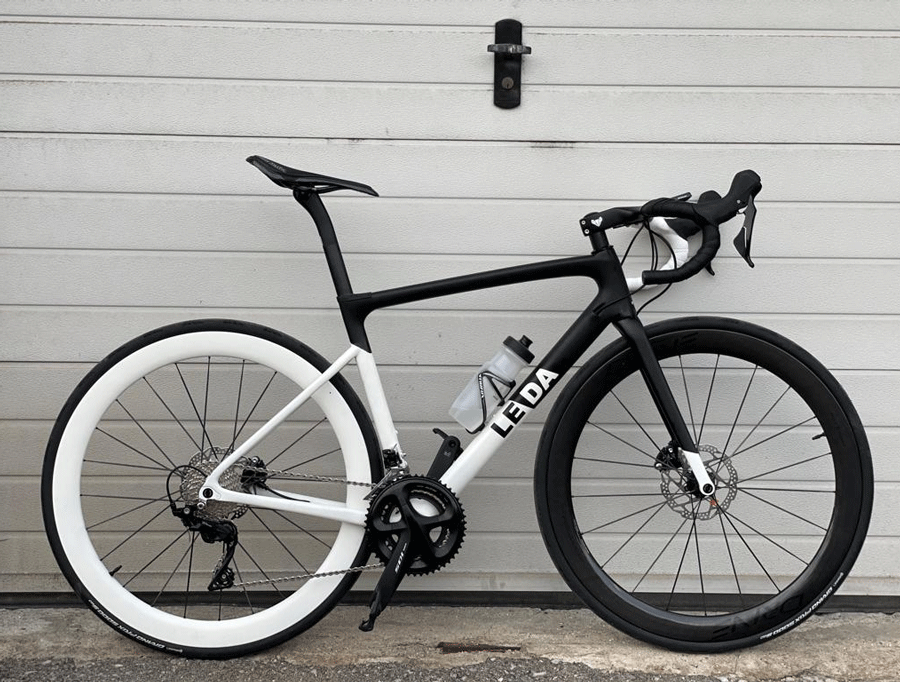
Conclusion:
The 27.5 mountain bike wheels are perfect for those looking for an excellent ride that provides the best of both worlds-performance and comfort. The 27.5 tires offer the benefits of both their larger and smaller counterparts, making them suitable for all levels of riders. With this wheel format, you are sure to achieve an unmatched performance, speed, and control on every ride.

This adventure of seeking to get a new bicycle began around 2019, I had been using it for around 10 years. the same bike and it was time for a change, so I started looking for different models of bike brands, some I liked them and others not so much, until in one of my searches I came across the Trifox bikes website, while I was looking at the models available at that time was the one that caught my attention, it was the X16 model, I really like it and its range of colors I loved it, I liked the blue chameleon color, so that model was the one I chose to be my new bicycle, I began to think in how I was going to assemble it, one option was to use the same parts that the bike I was using already had or put all the new components. This is how time passed and little by little I was looking for components to put on it and I began to make a budget to save.
This is how time passed and little by little I was looking for components to put on it and I began to make a budget to save.
At a certain point, I was about to buy the X16 frame but by chance I had to wait a little longer, not knowing what that wait would be to choose my dream bike.
Sometime later, when I entered the Trifox Bike page, I saw that they had added a new road frame model, the X18, and when I saw it, I knew that this would actually be the chosen one, although they only had matte black and black with silver. This is how time passed and sometimes I forgot the project of a new bicycle and other times I went back to the Trifox page to see the X18 and see the options it had and imagine what kinds o components to build it with.
It was not until 2021 that I took my project for a new bicycle seriously, I knew that the model that I really wanted over other brands was the X18, I analyzed the pros and cons, from the components that my bike had only some would be compatible to the reality that the wheels would necessarily have to be new since now they would have to be for disc brakes.
Once all the possibilities were analyzed, I began to look for the components with which I would assemble it, throughout 2021, I dedicated myself to searching what brake discs would I put on it, what gear group and what brand would they be, the seat, the handlebars and especially the rims, the latter were the ones that I focus on looking for the most since I knew that they would be an important part for the assembly of the bicycle.
It was by February 2022 that I finally decided to take the step that would start it all, if I'm not mistaken I made my purchase on February 7 of 2022, I was undecided between the matte black color or the black with silver and in the end I ordered the black with silver.
I remember that a week passed and I did not have an email confirming any movement of the shipment of the package or that it was in preparation, so I sent an email to ask what was happening, the treatment I received was very kind and they notified me that the package was already ready to be sent, but there was a small problem with the airline since flights to Mexico were suspended, so they gave me the option to cancel the purchase and return the money or the other would be to send it by ship but it would take 40 days to arrive, I decided that there was no problem waiting 40 days to receive it, I had already been planning this for a few years, there was no problem in waiting another 40 days.
During this waiting time, I dedicated myself to looking for the handlebars and the brake calipers, I looked for the handlebars were integrated handlebars, and I already had in mind that the wiring of the X18 would be internal, so I looked for the handlebar to make it compatible with the internal wiring, so I found one that I loved, a Ryet Aero, it was just what I was looking for, it was an integrated handlebar and could be used for external or internal wiring, I decided that the brake calipers were by cable, since I had no intention of getting an electronic and hydraulic group since my goal was to make the bike as light as possible.
By April 2022 it was a Wednesday that my X18 finally arrived, I was super happy, and I took it out of the box and began to assemble it with what came in the box, my surprise was when I put the metal ring that goes on the fork bearings and placed the base of the spacers, the base was very high, above the curve of the frame and I thought I had put it together wrong, but I kept trying but if the problem was with the metal ring, it was very high, contact the Trifox service and send photos of what was happening and indeed, the ring was very high, they told me that it should be 6.5 millimeters high so I measured it and the height was 8 millimeters, really because of the distance between China and Mexico it was really difficult to make a change of part, at that time the only option was to look for someone who could get the part down and for a while I searched without success, the bike was beautiful and I wouldn't give up to leave it like that after waiting so long.
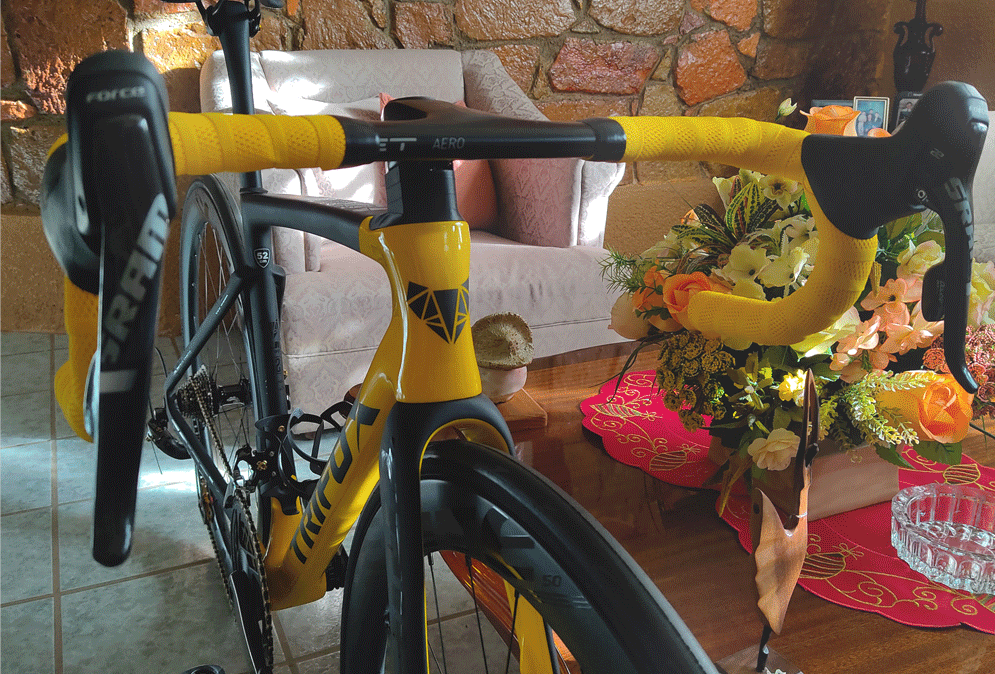
After about 15 days, and not finding someone who could lower the piece, I had a moment of enlightenment, I told myself -what am I doing? If I could create the piece myself, there was no one to look for, I was capable of creating it through 3D printing, so I got to work, I took measurements of the piece and made the plans directly on the computer, once the correct specifications of the piece were obtained, I made the 3D model and proceeded to look for someone to do the printing, luckily I found someone who was dedicated to 3D printing right here where I live in Fresnillo Zacatecas and he recommended me the material with which the piece could be printed and so it was done, once with the printed piece in my hands I did the test and it was perfect, it was returned in this project and with renewed spirits and create a new version of the ring with the largest space for the cables and to be able to pass the cables with greater ease.
A few days later the handlebars and brake calipers arrived, so I mounted them on the bike to get another surprise that the handlebars were not compatible with the spacers that came from the factory with the x18, they were big, but I did not worry since that opened new doors to more ideas and now the objective was to create spacers completely customized to fit the frame and handlebars, I worked using the spacers that came from the factory and the ones that came with the new handlebar as a base to create new ones, create the plans on the computer with their corresponding measurements and they were ordered to be printed, they were a success, they fit perfectly and they managed to make the handlebars completely compatible with the frame, from there I generated another 4 more prototypes of spacers to improve the design until reaching the final model.
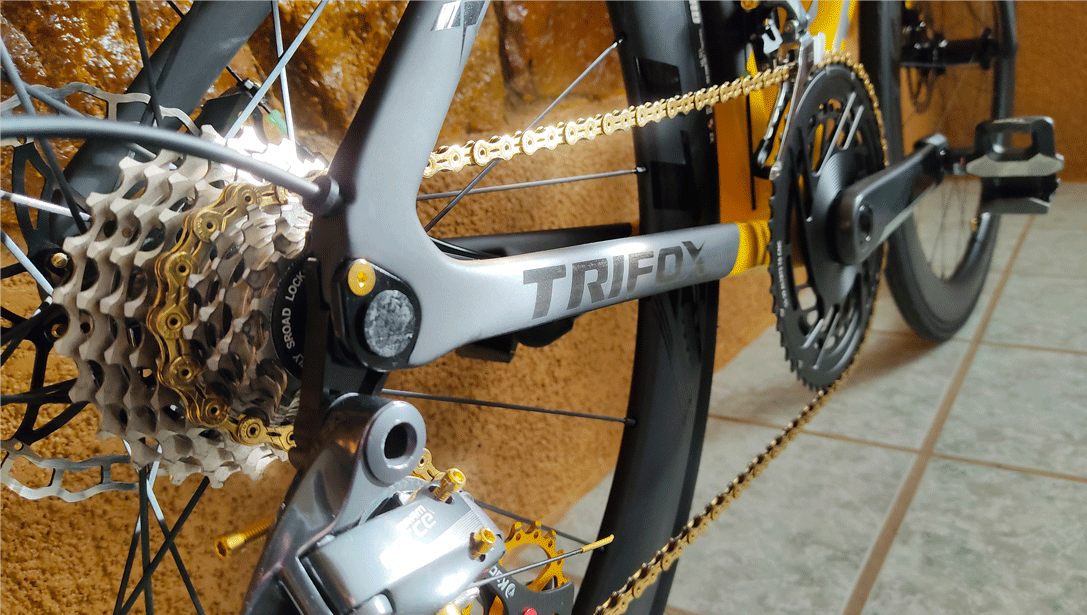
Since then, throughout the year 2022 I was working on this project, I knew what I wanted and how I wanted it, I wanted a bicycle that nobody had, a single model, something that had never been seen before that shined by itself, I started to make a new design in the painting for the painting, I made several designs with different colors, until reaching the yellow and black color, it was the chosen one, it fulfilled what I was looking for, it was elegant, it emitted a lot of presence and it shone by itself, with the selected colors I made some design proposals for the painting, but I wanted to see it applied to the bike to be able to observe it in more detail and have a clear idea of how it would look in the end, so I made a model in 3D of the bicycle frame and I placed the designs, until reaching the final design, bright yellow with matte black and letters in glossy black, this final design I knew would be unique and with the modifications I had made to the handlebar system it made it a unique bike that no one would really have, this led me to name my bike the X18 Ultimate. Given that there would be no one like it and it would be the culmination of all my efforts in this project, my Dream Build.
During the year 2022 each month I bought parts that I previously selected for the bicycle, the changes select the Sram brand and opt for Sram Force 22 mechanical since that I could no longer find Sram red, another month the seat was ordered, the chain in gold color and the sprocket in 11/25 configuration, for another month the tires were ordered, the brake discs in 140 mm, shift and brake cables with Teflon coating and all the hardware of the components in gold, including the handlebar tape in yellow, and after comparing several rim models, choose to buy ones from the EliteWheels brand of 50 mm for 6-bolt disc brake.
The year flew by and by September 2022 the only thing I needed was the crankset and to have the bike painted, I started looking first for who could do the paint job and after an arduous investigation I found who could make my vision come true, a carbon fiber bicycle repair business located in Puebla, Mexico, I contacted them and told them about the idea I had and they told me that it was possible to achieve it, and by the end of October, I sent the bicycle to Puebla in the same box in which it had arrived.

During the wait I dedicated myself to looking for the crankset, this time I wanted it to be from the Sram Red range and I was able to get it with a 53/39 chainring configuration and it came from Spain for By mid-November, everything was ready and all that remained was for the bike to return with new paint.
By mid-December the bicycle returned, with the paint design as I had imagined it, now everything was complete to start assembling it, for days I carried out assembly tests to see how it would look, and until the beginning of January 2023 I proceeded to assemble it.
During its assembly I discovered another small detail, this time in the hole of the fork tube through which the cable sheath passes, which was that the bevels of the hole did not allow it to slide well the cable sheath since they did not have a profile for it to slide well, but I took care of that myself using a drill bit wrapped in sandpaper I did the profiling and it was perfect the cable sheath slid smoothly.
It was my first time running wires inside a bike frame so I had to do a method to hold the handlebars with a broomstick and a chair to get the wires through. without problems, until it was complete and functional, resulting in a Trifox X18 bike like no other in the world.
It was an adventure that I enjoyed month by month, acquiring each component and visualizing how it would look at the end, the whole year 2022 until reaching a dream come true, In the short time that I've been using it, I can say that the bike is great, I haven't had any problems, it's completely safe and extremely light for a disc brake bike.

I am very happy and pleased with her and with the quality offered by her entire Trifox team, from her customer service to her products, I know that during the process there were small details but that did not affect my experience at all, in fact they motivated me to solve and improve them and it serves as a tool for you to improve the products even more, I am very grateful that you liked it the result I achieve with a model of their bikes, maybe in the future someone else can achieve what I did and build the dream bike.
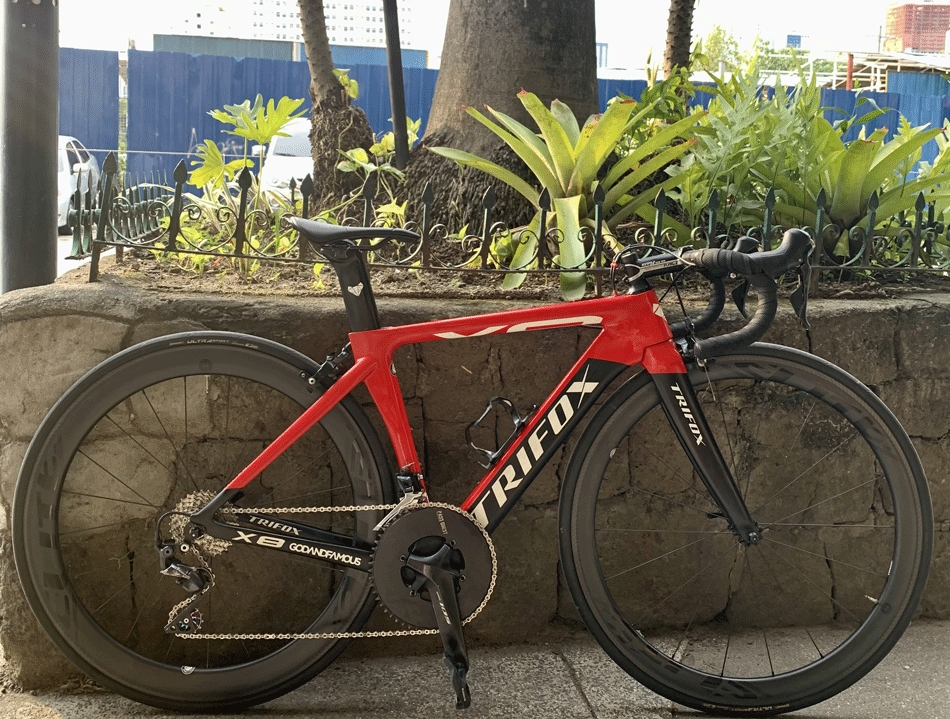
Biking enthusiasts know that the right gear and equipment can make all the difference when it comes to an exceptional ride. One piece of equipment that has become increasingly popular in recent years is the Carbon Road Bike X8.
This bike has been engineered with the latest technology and the finest materials to give bikers the ultimate performance and comfort.

Another benefit of the Carbon Road Bike X8 is the aerodynamic design, which helps reduce any drag and, in turn, saves energy. The shape of the bike has been carefully crafted to allow riders to cut through the air for maximum speed and efficiency. This reduces the amount of energy needed to ride the bike and ultimately allows riders to go faster for longer. This bike's aerodynamics make it perfect for riders who want to maximize their performance and compete at high levels.
Conclusion: The Carbon Road Bike X8 is a fantastic piece of equipment that offers riders a multitude of benefits. From its lightweight design to its durability and exceptional comfort, this bike is built to deliver an exceptional riding experience. Anyone who wants to get the most out of their biking activity can consider investing in the Carbon Road Bike X8. It is an investment that will undoubtedly pay off for years to come. Do not hesitate to check out this amazing bike now and be in awe of its detailed display of excellence.

























































